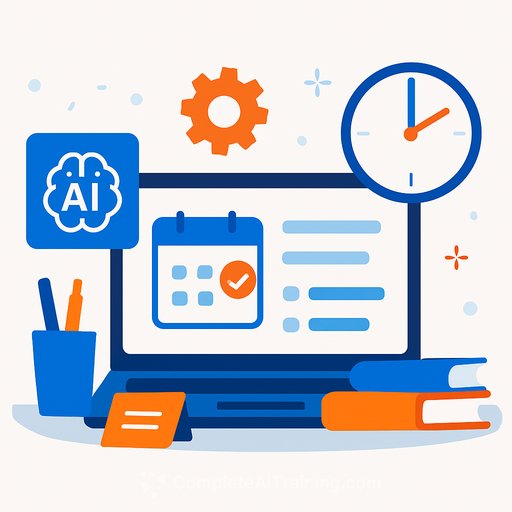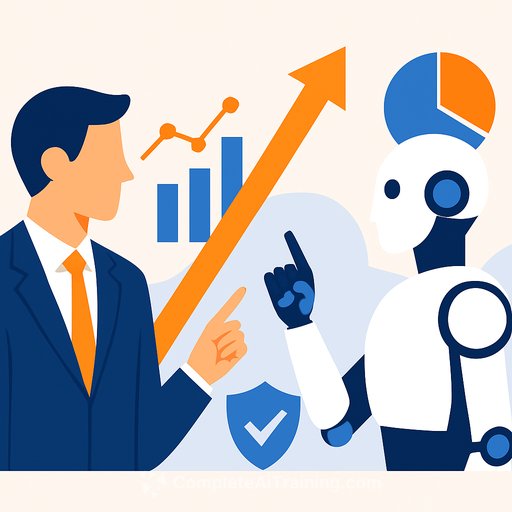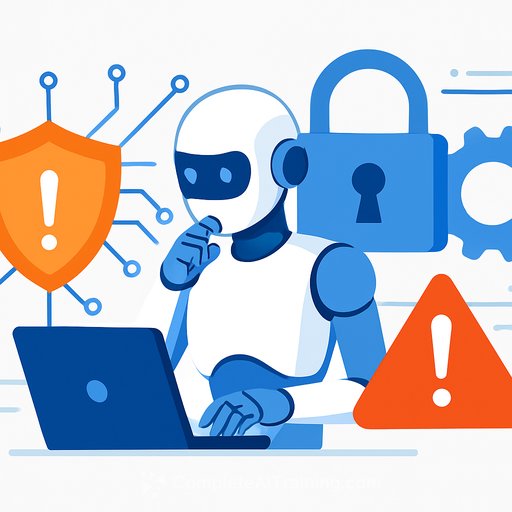5 best AI task managers to declutter your workspace
Managers don't need more meetings or more tabs. You need a system that protects your focus, keeps teams aligned, and moves priorities forward without you babysitting every task.
AI task managers do this by scheduling work automatically, adapting to changes, and giving you a clear view of what matters now. Below are five options that help you run a tighter operation with less manual coordination.
Highlights
- AI-driven tools like Motion and Taskade automate scheduling and streamline workflows.
- ClickUp and Wrike offer deep collaboration features and extensive customization for teams.
- TimeHero focuses on simplicity for users who prefer a clean, minimal experience.
Why managers should care
Post-it notes don't sync with your calendar or your team. These tools do. They reduce context switching, cut manual planning, and make prioritization obvious.
As AI learns your patterns, it helps you decide what to do next and when to do it. That frees you to coach, decide, and execute.
Motion
Motion blends task management with calendar automation. It auto-schedules tasks around your meetings, deadlines, and priorities-then reshuffles your day when plans change.
Miss a task? It reschedules. Get a surprise meeting? It reorganizes your plan. You can also manage projects, set dependencies, assign teammates, and see everything in one timeline.
- Best for: Managers who want a self-driving calendar and fewer status pings.
- Use it to: Protect focus blocks, keep deadlines realistic, and make weekly planning hands-off.
Taskade
Taskade evolved from simple checklists into a collaborative workspace with built-in AI. You can create custom AI agents to pull documents, summarize updates, or answer project questions on demand.
Its automation uses triggers and actions to handle repetitive steps, reducing manual follow-up. Onboarding is smooth thanks to a guided starter project.
- Best for: Remote teams that need flexible docs, tasks, and AI assistance in one place.
- Use it to: Turn meeting notes into action lists and automate routine workflows.
ClickUp
ClickUp positions itself as an all-in-one work hub: tasks, docs, goals, time tracking, whiteboards, dashboards, and an AI writing assistant. Custom fields, views, and workflows let you shape it to your operating system.
The tradeoff is setup time. It shines for teams that can invest in structure and standardization. Solo users may feel it's more than they need.
- Best for: Mid to large teams that need a shared source of truth and advanced reporting.
- Use it to: Centralize work, standardize processes, and align teams around measurable goals.
Wrike
Wrike is a proven choice for multi-team projects and more formal processes. You can create custom fields, request forms, and dashboards that match how your organization runs.
It also offers strong analytics and reporting, giving managers visibility into throughput and bottlenecks. It's built for teams, not individuals.
- Best for: Organizations that need structure, governance, and cross-functional coordination.
- Use it to: Standardize intake, track SLAs, and monitor performance across portfolios.
TimeHero
TimeHero keeps things clean and straightforward. It focuses on minimal clutter and automatic task scheduling without overwhelming you with options.
The initial layout may feel unclear, but once you learn where to add tasks, it's smooth. Ideal for managers who want calm, not complexity.
- Best for: Leaders who prefer a lightweight tool and clear daily plan.
- Use it to: Simplify planning and keep focus without a heavy setup.
How to pick the right tool (manager's checklist)
- Scheduling: Do you need automatic task-to-calendar planning (Motion, TimeHero) or manual control?
- Collaboration depth: Do teams need docs, whiteboards, and chat in one place (ClickUp, Taskade)?
- Governance and reporting: Do you require forms, SLAs, and portfolio views (Wrike, ClickUp)?
- Change tolerance: How much setup can your team handle? Pick simplicity if adoption will be slow.
- AI assistance: Do you want AI agents and content help (Taskade, ClickUp) or primarily AI scheduling (Motion, TimeHero)?
30-day rollout plan
- Week 1: Define 3-5 workflows you'll standardize (intake, sprint, approvals, reporting). Set clear owners.
- Week 2: Build templates and automations for those workflows. Keep it simple at first.
- Week 3: Migrate active projects. Train managers on dashboards and reports they'll check daily.
- Week 4: Add AI features (agents, summaries, auto-scheduling). Trim redundant meetings and status updates.
Proof point: AI boosts productivity when paired with process
AI helps most when your workflow is clear and repeatable. Standardize first, then automate. For broader context on AI's impact on productivity, see this analysis from McKinsey on how AI shifts knowledge work.
Next steps
Pick one tool, ship a lightweight rollout, and measure adoption weekly. Cut process bloat and let AI handle scheduling and summaries.
If you want curated training and playbooks that help teams work faster with AI, explore AI courses by job role and our office tools resources.
Your membership also unlocks:






